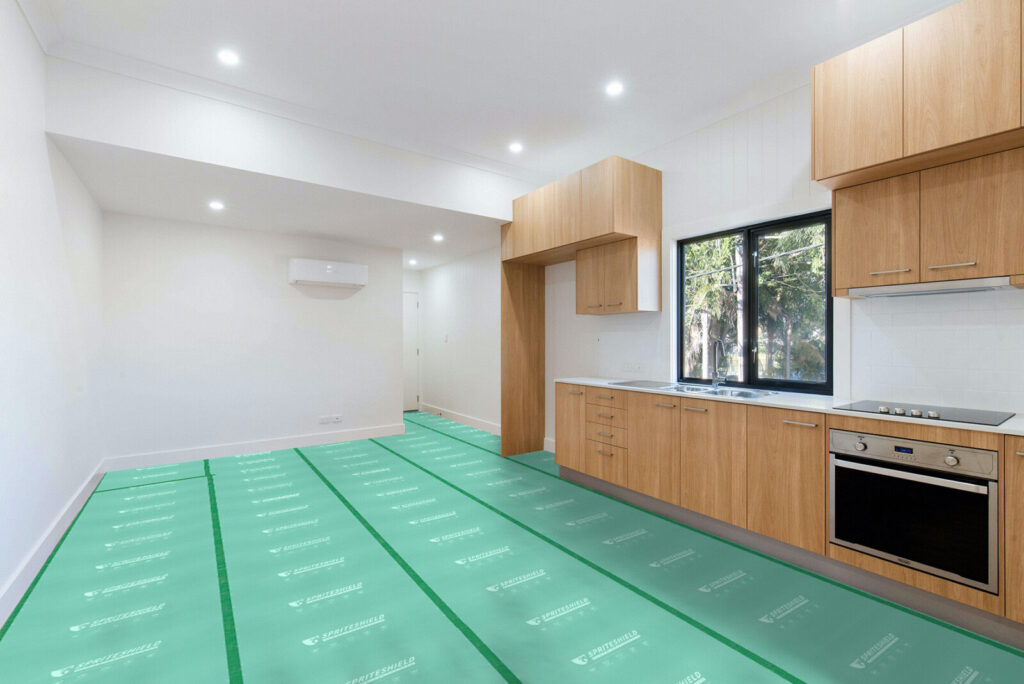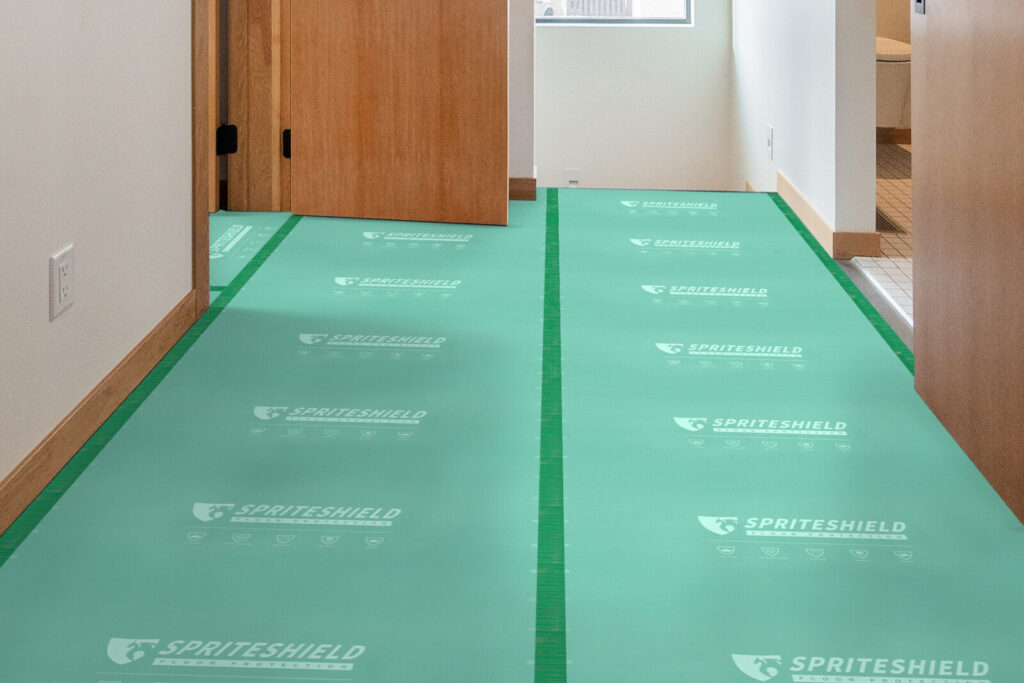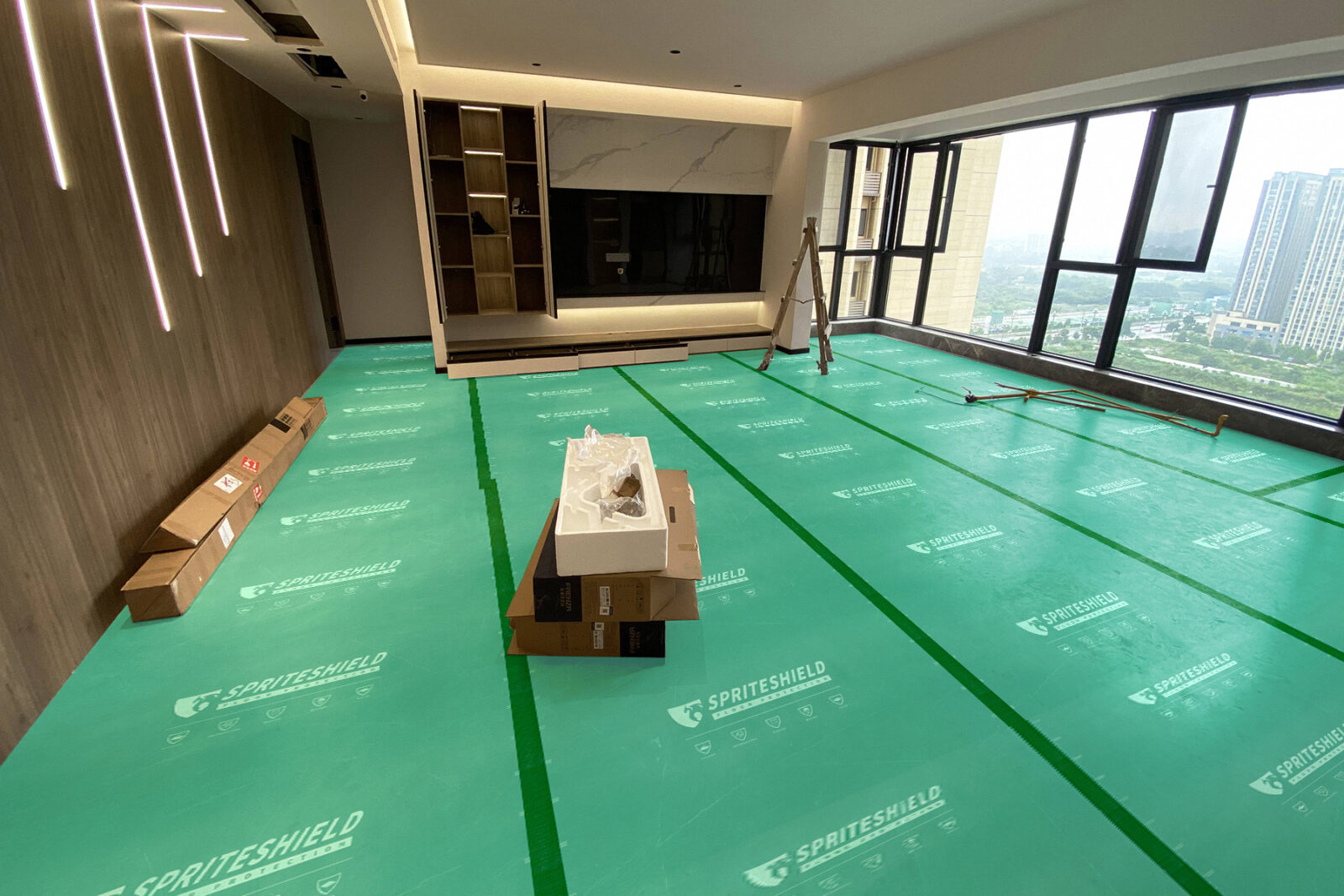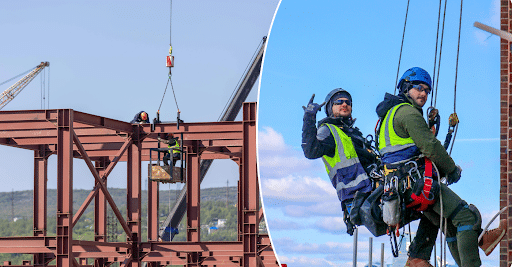When protecting your floors during a renovation, Ramboard and Spriteshield seem to offer very different values. Ramboard offers rigid, industrial-strength protection while Spriteshield is inexpensive and easy to use.
Table of Contents
Simple comparison
However, for how long most renovations actually require floor protection – typically just weeks – Spriteshield functions almost identically to Ramboard. When properly sealed at the edges with tape, Spriteshield:
- Covers exposed floors adequately, forming a protective barrier for light to moderate tasks.
- Shields floors from typical wear and debris caused by activities like painting, floor sanding, demolition and furniture moving.
- Allows projects to be completed without damage to flooring like hardwood, tile and laminate as effectively as Ramboard.
In other words, for the duration that renovations typically demand protection, Spriteshield functions like a “budget version” of Ramboard by:
- Covering floors for the length of the project
- Forming a protective barrier
- Shielding floors from light to moderate wear
- Allowing work to be done without damage
The key difference is cost. Spriteshield film costs a small fraction of Ramboard for equivalent coverage.

So unless your project will last several months – requiring Ramboard’s superior durability – inexpensive Spriteshield will typically function just as well for how long most projects demand floor protection. The cost savings can be hundreds of dollars for the average job.
Tips for Using Spriteshield Effectively
When used properly, inexpensive Spriteshield film can provide sufficient floor protection for most renovation projects lasting weeks:
Seal all edges with duct tape: Fold edges of the film under and secure with duct tape along all sides and around fixtures. This forms a complete barrier that contains dust and debris.
Replace film if it tears: Check Spriteshield daily for tears which could expose floors. Replace any damaged sections promptly to maintain coverage.
Remove carefully to avoid residue: Once complete, use a utility knife to cut Spriteshield film into sections that can be removed without sticking or leaving tape residue behind.
Lay additional film for high traffic areas: Cover high foot traffic pathways and work zones with a second layer of Spriteshield film to reinforce protection where needed.
overlap seams of multiple sheets: When using multiple rolls of Spriteshield, overlap the sheets by 6 to 12 inches and seal the seam with extra tape to prevent gaps in coverage.
Avoid placing furniture directly on film: While Spriteshield can withstand light foot traffic, do not leave furniture resting on the film for extended periods to avoid punctures or tears. Always use felt pads or blocks.

Roll up used film for next time: Once a renovation is complete, roll up any undamaged Spriteshield film and store it for future projects. It can typically be reused at least once.
By following these tips, inexpensive Spriteshield film can provide functional floor protection that lasts just as long as the average renovation needs – though for a fraction of the cost and hassle of heavy-duty Ramboard. Properly sealing edges and being proactive about replacements and renewals are key to maximizing the lifespan of your Spriteshield during projects.
Key Differences Between Ramboard and Spriteshield Temporary Floor Protection
Though they provide similar floor covering during renovation projects, Ramboard and Spriteshield differ significantly in:
Durability
Ramboard
• Made of rigid plywood with a thick rubber coating
• Withstands continuous use, heavy foot traffic, equipment and wet work
• Can last through multiple renovation projects
Spriteshield
• Made of flexible polyethylene film
• Functions well for light-duty projects lasting weeks
• Needs to be replaced after 2-3 months of continuous use
Cost
Ramboard
• Higher upfront cost, often 3x or more than Spriteshield
• Pricing depends on coverage area needed
Spriteshield
• Inexpensive option, often 1/3 to 1/2 the cost of Ramboard
• Affordable protection for most light-duty projects
Ease of use
Ramboard
• Needs to be precisely measured and cut to size
• Requires more planning and time to install properly
Spriteshield
• Easy to lay out and tape in place
• Minimal measuring needed; flexible to last minute changes
Appearance
Ramboard
• Tailored fit against fixtures provides professional finished look
Spriteshield
• More basic protective covering; not as “seamless” an installation
In summary, Ramboard offers
- Extreme durability and lifespan
- Precise tailored fit
- Professional finished look
While Spriteshield provides
- Budget-friendly protection
- Minimal effort due to flexible install
- Adequate coverage for light-duty projects
When Spriteshield Protects Floors Just As Well – For Far Less Money
For the majority of renovation projects that last just weeks and involve light to moderate activities, inexpensive Spriteshield film
- Covers floors adequately for how long protection is actually needed
- Shields floors from typical wear and debris encountered during most jobs
- Allows light to moderate projects to be completed without causing damage
In these ways, Spriteshield functions almost identically to rigid Ramboard for how long protection is demanded – despite costing just a fraction.
The key differences are
- Durability: Ramboard is more resilient but usually not needed for weeks-long projects.
- Tailored fit: While Ramboard’s precise fit looks professional, an adequately sealed Spriteshield covering works fine for most jobs.
- Cost: Spriteshield costs just 1/3 to 1/2 as much while providing similar functionality for limited time frames.
Therefore, unless your project will:
- Last several months
- Involve heavy equipment
- Strictly require Ramboard’s superior durability
Then inexpensive Spriteshield polyethylene film will likely protect your floors just as well – for far less money – than rigid Ramboard for how long most renovations actually demand coverage.
Only for projects exceeding typical thresholds in duration, rigor or flooring sensitivity should the higher cost of Ramboard provide truly better protection beyond what affordable Spriteshield can offer for weeks-long renovations involving light-moderate tasks.
In all other cases, adequate Spriteshield wins out over expensive Ramboard thanks to its budget price point and sufficient functionality for the duration that most projects demand temporary floor protection.
Conclusion
In conclusion, choosing between inexpensive Spriteshield film and durable Ramboard for floor protection comes down to balancing a few key considerations:
- Project length: For short projects lasting weeks, Spriteshield usually provides adequate protection at a fraction of Ramboard’s cost. But for multi-month projects, Ramboard’s superior durability may justify higher expenses.
- Flooring material: Ramboard better protects high-end flooring strictly requiring maximum resilience.
But Spriteshield can shield most standard floors equally well for shorter durations.
- Activity levels: Light equipment/foot traffic favors budget Spriteshield. But heavy/continuous usage benefits from Ramboard’s industrial-strength design.
- Budget: Ramboard may be worth a higher investment for its tailored fit and ability to protect floors through prolonged heavy use. But Spriteshield saves money for typical weeks-long renovations.
- Proper installation and maintenance: With care, both products can provide adequate protection matched to how long floor covering is truly needed, though at drastically different price points.
Ultimately, choose the option that:
- Functions well enough given required lifespan and activity levels
- Provides value aligned with project demands and budget
For most light-duty projects lasting weeks, properly installed Spriteshield film typically shields floors equally well at a small fraction of Ramboard’s expense. But for renovations extending months under heavy use, resilient expensive Ramboard often becomes worth the investment for protecting even higher-end flooring through prolonged wear and debris.
The right choice depends on matching product lifespan with how long adequate protection is realistically demanded – without spending more than necessary to achieve that coverage. With proper maintenance and installation, floor protectors have the potential to function equally – though at drastically different price points aligned with how long they are actually needed to shield floors through your specific project.





